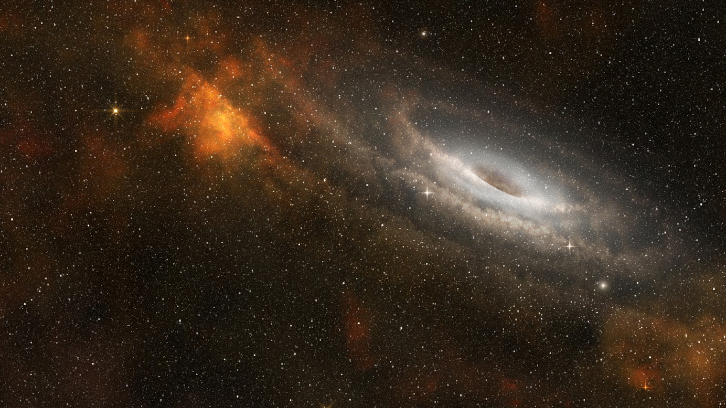Exploring the universe: spatial curvature and thermodynamics

A new study from reveals that the evolution of the universe is more mysterious than previously thought. Using the second law of thermodynamics and observational data, researchers from the Department of Physics have explored the spatial curvature of the universe. They have determined that both zero curvature, associated with a flat universe, and positive curvature (spherical universe) are consistent with this law, but negative curvature (hyperbolic universe) still raises uncertainties. The results underline the complexity of our universe and the need for further research to understand its true nature.
On large scales, the visible universe is isotropic (no apparent preferred direction) and possibly homogeneous (all positions are assumed to be equivalent, our view from our galaxy would not differ on average from any other). To describe its evolution, we use the three spatial coordinates plus time, considering the latter as an additional coordinate.
Due to the homogeneity and isotropy of space, at each instant, the universe must have one of three possible geometries: flat, spherical or hyperbolic. In the first case, its curvature is zero, positive in the second and negative in the third. At present, observations indicate that its absolute value is very small, but they do not determine which of these possibilities is the real one. Moreover, it should be noted that evolution does not change the sign of the curvature.
In our work “Spatial curvature and Thermodynamics” recently published in the journal Monthly Notices of the Royal Astronomical Society, we explore the close connection between gravitation and thermodynamics to see if by using the second law of thermodynamics it is possible to rule out any of these three possibilities. This law states that the entropy of the Universe cannot decrease, which translates into a simple relation between the rate of change in the expansion of the Universe, obtained by analysing observational measurements at different epochs, and the spatial curvature. Importantly, the entropy of the visible universe is largely dominated by the entropy of the horizon, which is associated with our experimental unknown due to the constraints imposed beyond the horizon by the finite speed of light.
Nowadays, we know with near certainty that the rate of expansion of the Universe has been decreasing over time almost since its beginning, and that it is currently increasing. This, together with the aforementioned relation, allows us to easily deduce that the null and positive curvature are consistent with the second law. However, in the case of negative curvature (hyperbolic space), the situation is doubtful. In our work we have used the second law together with observational data (sixty data of the expansion rate of the Universe at different epochs) to see if it is fulfilled in the case of negative space curvature.
Before applying this law, we had to refine the data by means of a statistical smoothing process, as they are affected by significant experimental errors. We then fitted four parameterisations of this rate as a function of the degree of expansion to the refined data. Subsequently, we studied, taking into account the horizon entropy, whether the second law is satisfied in the case of negative curvature. Our result indicates that it is also fulfilled in this case.
Therefore, the present data are neither sufficiently abundant nor of sufficient quality to be able to determine whether negative spatial curvature, like the other two possibilities, is also allowed by Nature. These findings suggest that the universe is even more enigmatic than we think, and further research is needed to understand new questions about its evolution.
Graphic image representing the three geometries of the Universe; hyperbolic (open), flat and spherical (closed). [Source: Kant Mishra R. et al, 2010, DOI:10.5539/jmr.v2n3p182]
Diego Pavón
Emeritus Professor of Physics
Universiat Autònoma de Barcelona
Diego.pavon@uab.cat
References
Narayan Banerjee, Purba Mukherjee, Diego Pavón, Spatial curvature and thermodynamics, Monthly Notices of the Royal Astronomical Society, Volume 521, Issue 4, June 2023, Pages 5473–5482, https://doi.org/10.1093/mnras/stad921


